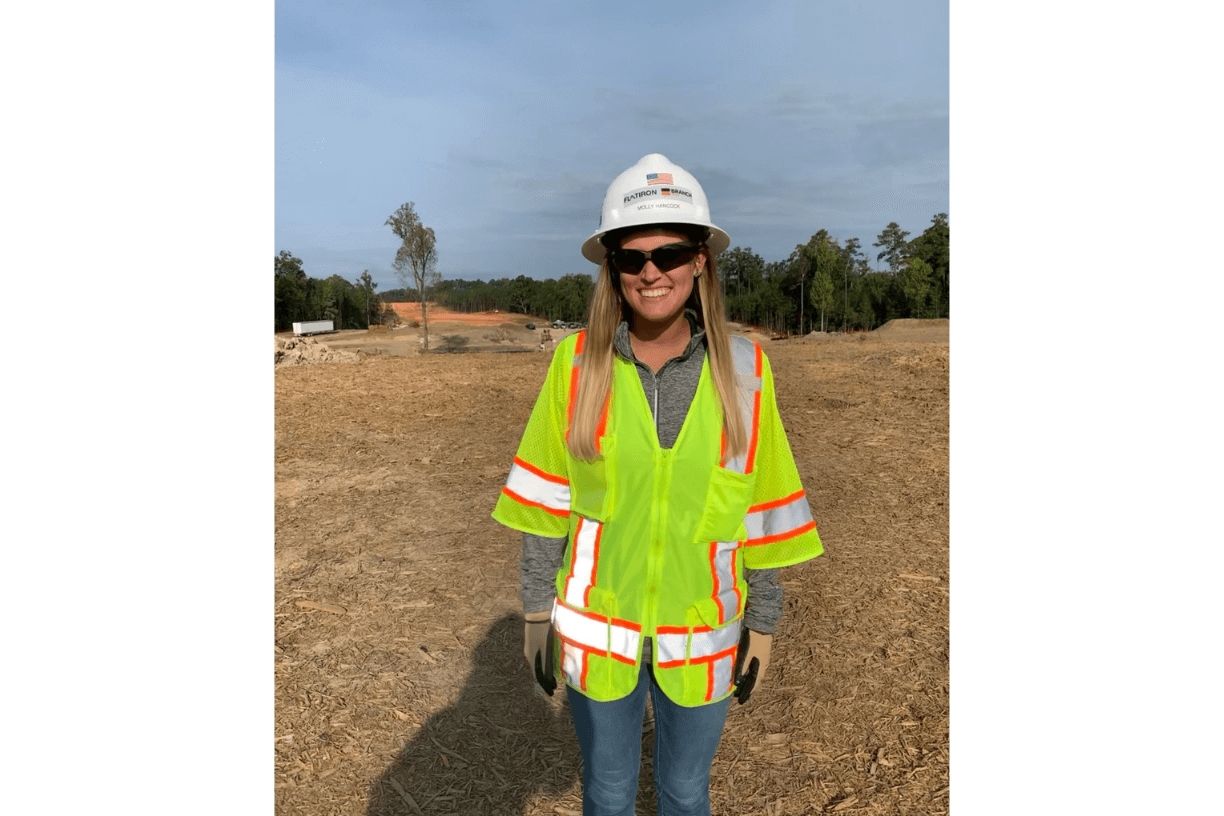Safety & Environment
First Class 3 Safety Vest for Women Meets Important Need

It was a routine inspection, but one that could have turned tragic.
A few years before joining Flatiron, Field Environmental Coordinator Ashley Borgard was climbing down a ladder, after inspecting rebar at a South Carolina hospital project.
With about nine feet left to descend, the bottom of her vest got caught on a bolt. What happened next was nothing short of terrifying.
“I sort of panicked because I didn’t know what was going on,” Borgard says. “In trying to get my vest free I slipped, I was trying to hold onto my hardhat as well which is silly because I should have just let it go.”
Borgard fell from the ladder onto a piece of uncapped steel, but fortunately not hard enough to be injured. From that day on, she began tying a knot onto her vest to keep it as tight as possible.
This month the first certified in the U.S. and Canada class 3 safety vest for women went into circulation at Flatiron projects. Several Flatiron employees collaborated on the design, including helping to test prototypes in the field.
A major feature of the new vest is a fit that’s better suited to the female form, helping to prevent the type of situation Borgard found herself in.
East Coast Health and Safety Specialist Molly Hancock explains it this way: “There is a bigger risk for injury when females have to wear male vests. They are bigger.So they have a higher potential to get caught on things, especially working around machinery with rotating or spinning parts. With the new female vests, this risk should be eliminated.”
Now, Hancock is now one of numerous Flatiron women getting the most out of the vests at their projects.
Manufacturer, Distributor Thankful for Flatiron’s Help with Vest
Highly specialized design went into producing the vest. Among the highlights: its shoulders are narrower, the waist is shaped and it has side slits to make it more comfortable to wear. The zipper is raised. And the vest even has smaller arm holes to better fit a woman’s shape. No detail was spared on the way to make something that meets the ANSI/ISEA 107 standard.
Flatiron first floated the idea of what it was seeking to Fastenal. The industrial supplies giant realized they had nothing in their stock that matched the specs Flatiron was seeking. Fastenal then jumped into action, facilitating conversations between their experts, Flatiron and manufacturing company Radians.
Radians Product Developers Nicole Novick and Kyra McEnany were project leaders on the manufacturing side. “Creating women’s garments that fit and that still boast the same, well actually in this case, improved features compared to the men’s style has been exciting and super fulfilling,” Novick says.
Fastenal Regional Construction Sales Manager Kellan Campbell believes the future is bright for the product. “Women make up more and more of the workforce. They represent 10% of all construction workers, and we see that number continuing to grow,” he says. “With that increase, the demand for PPE designed for women growing as well, and keeping women safe on the jobsite is a priority for the construction industry.”
Symbol of a commitment to inclusion
Since the vests arrived at Flatiron projects in early October, the response has been overwhelmingly positive from female team members.
Northwest Division Field Engineer Stephanie Gutierrez says the vests send a powerful message. “Flatiron has been doing such a great job at making everyone feel included,” she says. “It feels really good to work for a company that puts so much thought and effort into details like this.”
Northwest colleague Mirella Davis agrees: “When I put on the new women’s vest I surprisingly felt included. Flatiron goes out of its way to integrate workplace inclusion even to its smallest details.”
Finally, Borgard no longer will have to tie knots to get a better fit out of her vests. She knows safety is more than just equipment, but believes Flatiron has taken a big step in the right direction: “Nothing can prevent all accidents, but it is nice to have properly fitted gear to help minimize them.”
